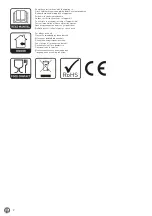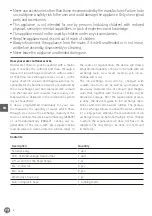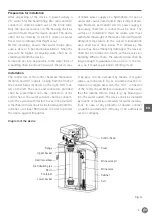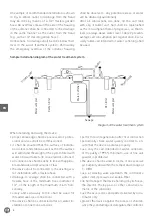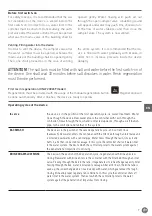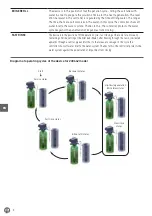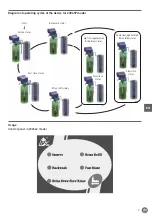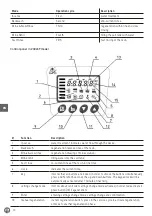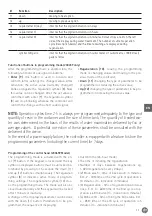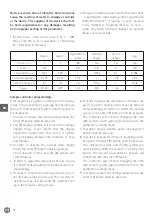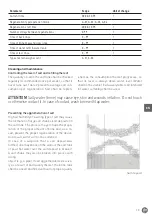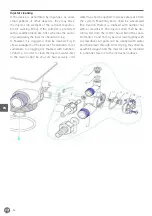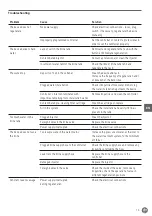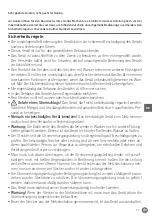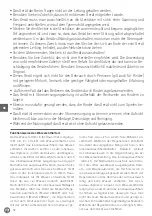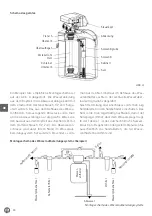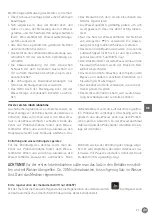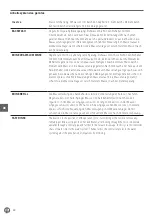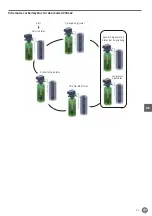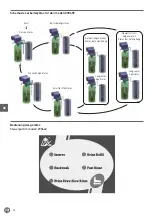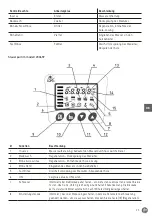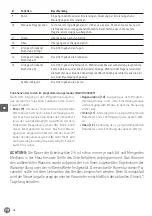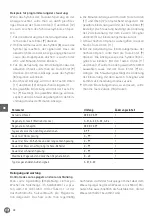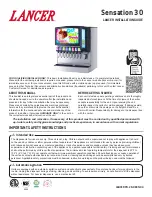
13
EN
Parameter
Scope
Unit of change
Current time
00:00-23:59
1
Regeneration type/operation mode
A-01, A-02, A-03, A-04
-
Regeneration start time
00:00-23:59
1
Number of days between regenerations
0-99
1
Time of back rinse
0 – 99
1
Time of brine draw and slow rinse
0 – 99
1
Time of water refill in water tank
0 – 99
1
Time of fast rinse
0 – 99
1
Type of external signal sent
b-01, b-02
-
Cleaning and maintenance
Controlling the level of salt and refilling thereof
The quantity of salt in the salt tank shall be checked
regularly (recommended once per week), so that it
never runs out. Table 2 presents average salt con-
sumption per regeneration. Salt shall be replen-
ished as the consumption thereof progresses, so
that its level is always above water level. (Water
shall not be visible). Exclusively tablet salt intended
for water softening shall be used.
ATTENTION!
Salty water (brine) may cause eye, skin and wounds irritation. Do not touch
or otherwise contact it. In case of contact, wash brine with tap water.
Preventing the agglomeration of salt
High air humidity or a wrong type of salt may cause
the formation of large salt chunks (salt deposits) in
the salt tank. The process may protrude the prepa-
ration of the proper amount of brine and, as a re-
sult, prevent the proper regeneration of the device.
As a result, water will not be softened.
In case of a suspicion that a salt deposit was
formed, one may knock on the walls of the salt tank
or pour hot water over the salt deposit to break it.
A salt chunk may also be broken into pieces with
a long
object (e.g., a pipe). If salt agglomerated excessive-
ly as a result of bad quality thereof, the brine tank
shall be rinsed and filled with salt of proper quality.
Salt deposit


